Wheat is an annual plant. It seems that improving Wheat production and quality is necessary to alleviate world hunger, reduce waste from spoiled crops on farmland, and increase the efficiency of existing farm management methods. Wheat (Triticum) is an herbaceous genus of the mostly Poaceae family. Wheat production is needed to provide food for the world’s population, and increasing production will be necessary to feed the growing population. Let’s check out the top 20 steps to boost Wheat yield.
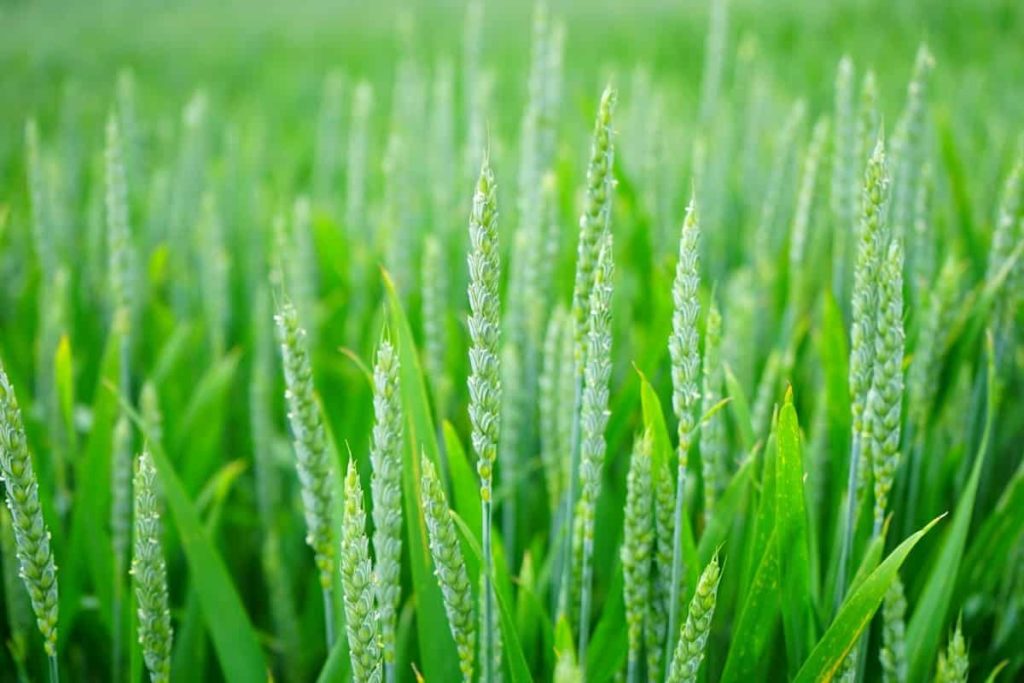
One way to meet future demand is to increase Wheat production by reducing the gap between actual and potential output. A balanced crop nutrition program that includes all macro and micronutrients is essential to help manage all of these components. Intensive Wheat management involves adjusting scouting and farming practices to get the crop to critical numbers for higher yields.
These significant numbers are the Wheat crop’s best opportunity to produce high yields. Wheat is the essential food crop globally, growing in millions of hectares. However, wheat production is generally low and varies with weather, soil, and crop management methods. The best management practices (BMPs) go a long way in helping farmers get the best yields and return on investment when sowing winter Wheat.
Factors affecting Wheat production
- Climate Change
- High Costs
- Increasing Demand for Biofuels
Top 20 steps to boost Wheat yield
Step 1: Start with soil
Soil type and cultivars have the most significant impact on the establishment, so good soil management is essential whether you are a direct drilling advocate or die-hard plowman. The crop is grown on structural soils, highly fertile, and the soil acidity for Wheat is 6-7.5 pH. The best soils for Wheat are chernozem, podzolic and sod gley. Heavy soil with good drainage is suitable in dry conditions.
This soil absorbs and retains rainwater well. Heavy soils with poor texture and drainage are unsuitable as Wheat is susceptible to waterlogging. Wheat can be successfully grown on light soil provided it has better water and nutrient holding capacity. Wheat grows in various soils, but it grows best in well-drained or clay loam soils. The two significant hazards to Wheat plant growth are poor soil drainage and high soil acidity levels.
In case you miss this: Best Fertilizer for Wheat: Organic, NPK and Application
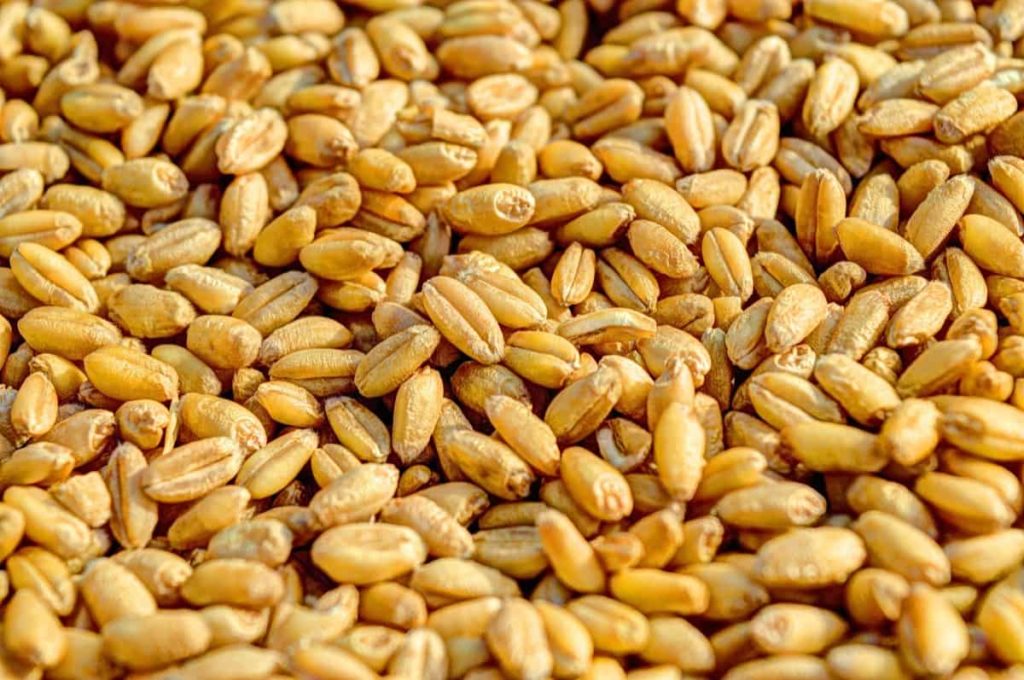
Step 2: New high-yielding varieties of Wheat
The new high-yielding variety of Wheat helps the farmers to double their yield. Wheat variety HD2967, developed by the Indian Agricultural Research Institute (IARI), is popular among farmers due to its high yields. However, they have new options, and hopefully, they will get better, and one of the first things to consider before planting is what kind of Wheat you want to grow. Wheat is widely classified as winter Wheat and Spring Wheat.
Winter Wheat is high-yielding and is planted in autumn and harvested (depending on location) in spring or summer of next year. Spring Wheat is not very productive but tolerates dry conditions. Therefore, it is planted in spring and harvested in the autumn season. Then both spring and winter Wheat are classified as soft Wheat, hard Wheat, or durum. Consult local seed dealers, review the results of university extension variety trials and select the best seed varieties for local environmental conditions and individual farming methods.
Step 3: Lighting requirements for best growth
Wheat cultivation is significantly affected by the length of daylight hours. In addition, plants thrive in winter with bright light and low temperatures.
Step 4: Temperature for healthy Wheat crops
The maximum temperature required for Wheat farming is about 25°C, and the minimum temperature drops from 3°C to 4°C. The maximum temperature at which Wheat can grow well is between 30°C and 32°C. Production houses and farmers face severe climatic temperatures, making it difficult to maintain the growth of healthy Wheat crops.
In case you miss this: Ways Wheat Farming Make You Rich in a Short Time
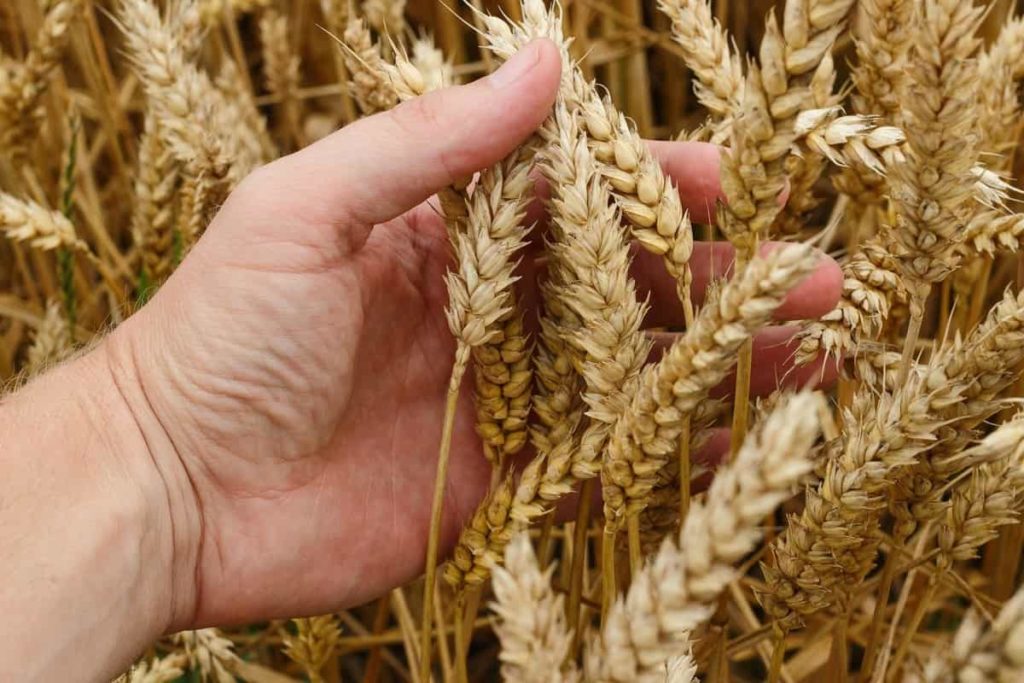
Step 5: Seed genetics
Plant a new Wheat variety commercially tested for five years. It can help increase yields by 10 bushels per acre compared to older Wheat varieties. Look for the genetics of certified seeds that provide good winter hardiness, tolerance to diseases like head scab, and good stability under nitrogen fertilization required for high yields.
Step 6: Planting tips
Winter Wheat varieties should be planted about 6 to 8 weeks before the first frost date in autumn. However, wheat varieties should be planted as early as possible in spring as work can be done on the ground in spring. Commercial Wheat farming is usually mechanically drilled by a machine that forms a fur and drops the seed inside before covering it back up.
Wheat seeds can be sown in small areas by hand spreading or by hand crank seeds. Seeds are planted at about 2 to 12 cm (0.8–4.7 inches) depending on soil conditions (seeds should be sown deeper in dry soil). The soil should be lightened, so the seeds are kept at the required depth once the seeds are sown.
Step 7: Conditions for improving crop production:
Increasing Wheat productivity by 50% or more is possible only by improving crop management under current environmental conditions. First, it is essential to consider the climatic conditions and crop productivity. Secondly, it is necessary to promote efficient agricultural activities according to a particular capacity type. Finally, it is possible to control its development using practical elements of agricultural technology. Some useful features include pruning, soil tillage, sowing time, varieties selected for planting, fertilizers, and irrigation.
In case you miss this: Organic Wheat Farming, Production Practices
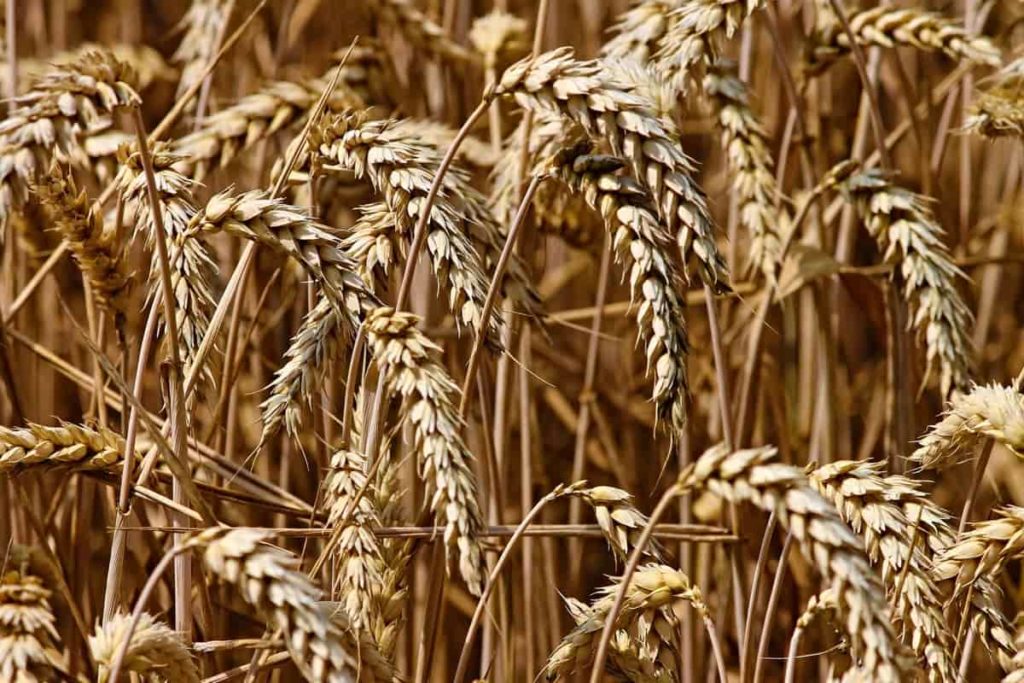
Step 8: Practice seasonal soil rotation
The benefits of crop rotation include improving soil quality, providing nitrogen credit, breaking annual and perennial weed cycles, protecting soil from soil erosion, distributing farming operations, and giving good returns on investment.
Step 9: Good nutrition for boosting your Wheat yield
Good nutrition is essential for crop growth. Nitrogen, phosphorus, potassium, sulfur, and magnesium are essential nutrients, but all macro/micronutrients, trace elements, and soil pH must be improved for maximum fertilizer efficiency and yield benefits. Both growers work on extensive nutrition programs, variable rate applications, and regular soil and tissue testing to accurately determine crop needs and avoid deficiencies at critical times.
Such techniques allow for savings where higher residual nitrogen levels are available from previous crops. A balanced crop nutrition strategy should include secondary and micronutrients necessary for achieving high yields.
Step 10: Weed early and often
The major problem of weeds in Wheat cultivation is grassy weeds. Under suitable conditions, rapid and dense growth of Wheat can eliminate most of the weeds. If the Wheat plants are thin, then weeds like thistle can grow. Wild garlic can reduce the quality of Wheat by staining it with its pungent odor. Weed problems are treated with chemical herbicides. Hand weeding is still practiced in countries where labor costs are relatively low.
Step 11: The Importance of potash in Wheat crop
According to agricultural research, Potash, nitrogen, and phosphorus are vital in crop supplements. The importance of the balanced use of fertilizers is the same in both irrigated and non-irrigated. The use of Potash makes the green Wheat plant more tillering, producing more earrings. More grains are formed when the total amount of Potash is given and higher yield. Potash provides the full benefits of chemical fertilizers that contain nitrogen and phosphorus and prevent the damage caused by excess nitrogen.
Potash helps the roots grow, making them stronger, taller, and healthier. Due to the dense and long roots, the plants can stand well by taking water and nutrients from the soil well. Potash strengthens the stems of Wheat plants, and thus the plant does not fall. Potash strengthens plants and gives them the strength to fight against harmful pests and diseases. Potash controls the use of water in plants, which helps the plant withstand heat, drought, and frost. Potash is very useful for rainfed farming.
In case you miss this: Wheat Cultivation Income, Profit, Yield, Project Report
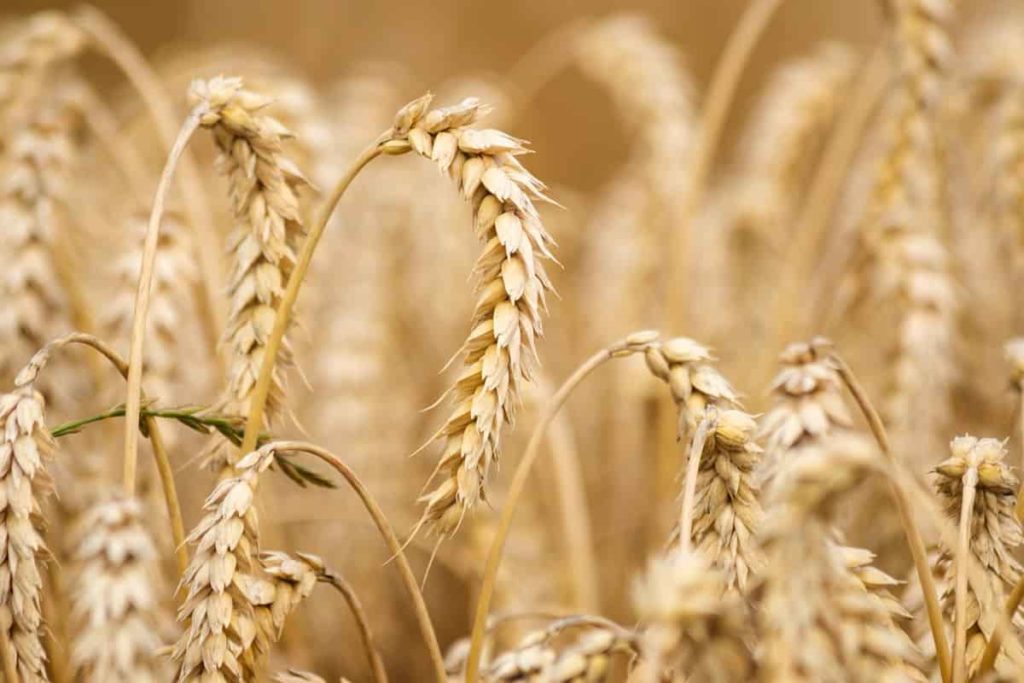
Step 12: Manures and fertilizers application time for better yield
Fertilizers and manures play an essential role in Wheat cultivation. Manures improve the general physical soil condition and enhance its water holding capacity. Therefore, large quantities of fertilizer should be added. Apply about 10-15 tons of well-decomposed farmyard manure or compost 4-6 weeks before sowing. It is necessary to add fertilizers and chemical fertilizers to get higher yields.
Step 13: Strategies to maintain Wheat production
Reduce tillage – If you have good quality and nutritious soil (either by fertilizing or crop rotation), don’t overdo it with tilling. Leaving the soil like this will encourage the acquisition of nutrients in Wheat.
Try nitrogen fertilizer – Nitrogen-rich fertilizers have improved yields without sacrificing quality. It is a more efficient choice than simple farmyard manure. The critical time for nitrogen application comes before sowing, V-5 stem length, and heading. Many experts recommend using distributed nitrogen to reduce housing and increase Wheat quality.
Try green manure – On fertile lands, you can try to use green manure. First, choose fodder legumes to grow (prevent weeds from sprouting) and then convert them into the soil to improve texture and act as manure.
Step 14: Crop care
Farmers need to know that head scabs and other diseases can reduce quality and yield when flowering. Applying fungicide on the flag leaf before the disease can help maximize the efficacy.
Step 15: Phosphate improves grain size
It plays a significant role in supplying energy to plant processes. Energy is required to redistribute stored carbohydrates, making phosphate nutrition important in achieving good grain size. Both solid fertilizer phosphate and foliar phosphate can be used to improve the final size of the grain.
Step 16: Manganese and zinc affect the size and weight of grains
Both manganese and zinc will improve the importance of Wheat grains and their role in plant nitrogen metabolism.
Step 17: Identify and control diseasesa
Control weed, diseases, and pests with timely scouting and identification for maximum productivity. Seed treatment, Wheat varieties that are resistant from the inside, and foliar herbicide, fungicides, and pesticides go a long way in crop protection from pests.
Step 18: Crop protection products
The use of crop protection products such as fungicides and suitable fertilizers can protect maximum yields during the growing season, making the weather conducive to Wheat production. In addition, crop rotation is essential for effective disease control. Without crop rotation, these diseases can severely damage yields.
In case you miss this: Wheat Seed Germination, Time, Temperature, Procedure.
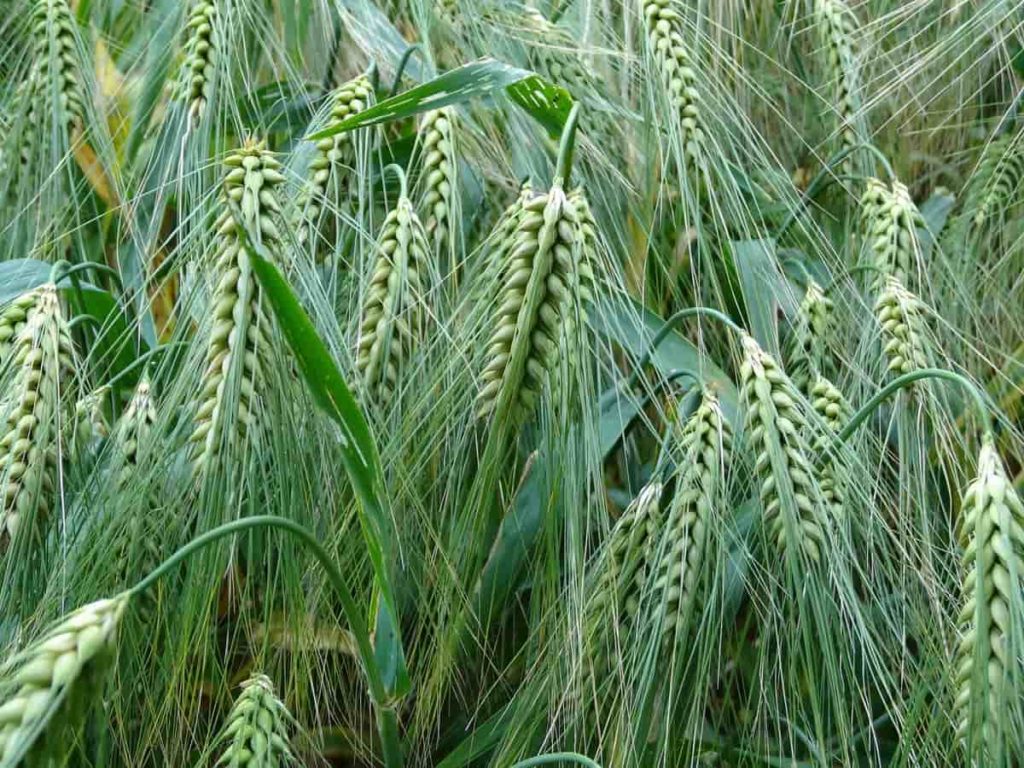
Step 19: Harvesting time is essential for crop growth
Lastly, farmers need to control the post-harvest weeds so that maximum water can be stored in the soil. Using herbicides to burn after harvest can help reduce weeds and increase stored water. The two main components of Wheat production are the number of grains per unit area and the weight of individual grains.
Step 20: Harvesting tips to get more yield
Higher yields are obtained by obtaining accurate leaf and shoot numbers, maintaining a green leaf canopy, increasing the number of grains and grain size. Wheat is ready for harvest when the stalks and heads turn yellow with green, and the head of the seed bends towards the ground. Check the ripening of seeds before harvesting. It should be strong and crisp and not doughy in texture. Combined harvesters usually produce commercially grown Wheat.
- Types of Pesticides Used in Agriculture: A Beginner’s Guide
- Economical Aquaculture: A Guide to Low-Budget Fish Farming
- 15 Common Planting Errors That Can Doom Your Fruit Trees
- How to Make Houseplants Bushy: Effective Tips and Ideas
- Innovative Strategies for Boosting Coconut Pollination and Yield
- Pollination Strategies for Maximum Pumpkin Yield
- The Complete Guide to Chicken Fattening: Strategies for Maximum Growth
- Natural Solutions for Tulip Problems: 100% Effective Remedies for Leaf and Bulb-Related Issues
- Revolutionizing Citrus Preservation: Towards a Healthier, Greener Future
- Natural Solutions for Peony Leaf and Flower Problems: 100% Effective Remedies
- Maximizing Profits with Avocado Contract Farming in India: A Comprehensive Guide
- Natural Solutions for Hydrangea Problems: 100% Effective Remedies for Leaf and Flowers
- The Ultimate Guide to Choosing the Perfect Foliage Friend: Bringing Life Indoors
- From Sunlight to Sustainability: 15 Ways to Use Solar Technology in Agriculture
- The Ultimate Guide to Dong Tao Chicken: Exploring from History to Raising
- The Eco-Friendly Makeover: How to Convert Your Unused Swimming Pool into a Fish Pond
- Mastering the Art of Delaware Chicken Farming: Essentials for Healthy Backyard Flocks
- 20 Best Homemade Fertilizers for Money Plant: DIY Recipes and Application Methods
- How to Craft a Comprehensive Free-Range Chicken Farming Business Plan
- Brighten Your Flock: Raising Easter Egger Chickens for Beauty and Bounty
- How to Optimize Your Poultry Egg Farm Business Plan with These Strategies
- Subsidy for Spirulina Cultivation: How Indian Government Schemes Encouraging Spirulina Farmers
- Ultimate Guide to Raising Dominique Chickens: Breeding, Feeding, Egg-Production, and Care
- Mastering the Art of Raising Jersey Giant Chickens: Care, Feeding, and More
- Ultimate Guide to Raising Legbar Chickens: Breeding, Farming Practices, Diet, Egg-Production
- How to Raise Welsummer Chickens: A Comprehensive Guide for Beginners
- How to Protect Indoor Plants in Winter: A Comprehensive Guide
- Ultimate Guide to Grow Bag Gardening: Tips, Tricks, and Planting Ideas for Urban Gardeners
- Guide to Lotus Cultivation: How to Propagate, Plant, Grow, Care, Cost, and Profit
- Agriculture Drone Subsidy Scheme: Government Kisan Subsidy, License, and How to Apply Online
- Ultimate Guide to Raising Araucana Chickens: Breed Profile, Farming Economics, Diet, and Care
- Bringing Hydroponics to Classroom: Importance, Benefits of Learning for School Students
- Ultimate Guide to Raising Polish Chickens: Breed Profile, Farming Economics, Diet, and Care
- Ultimate Guide to Raising Australorp Chickens: Profile, Farming Economics, Egg Production, Diet, and Care
- Silkie Chicken Farming: Raising Practices, Varieties, Egg Production, Diet, and Care
- Sussex Chicken Farming: Raising Practices, Varieties, Egg Production, Diet and Care